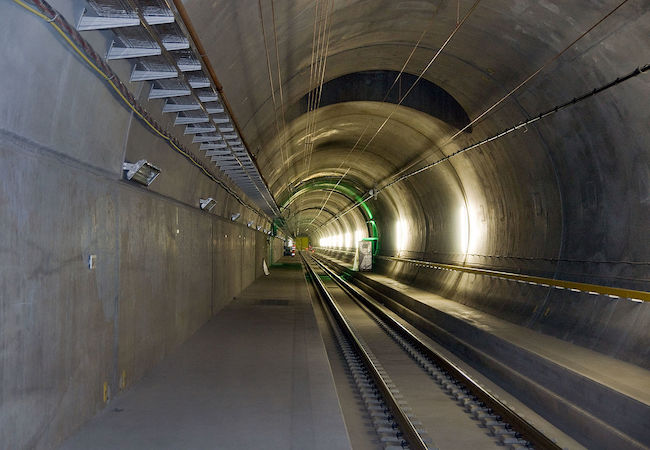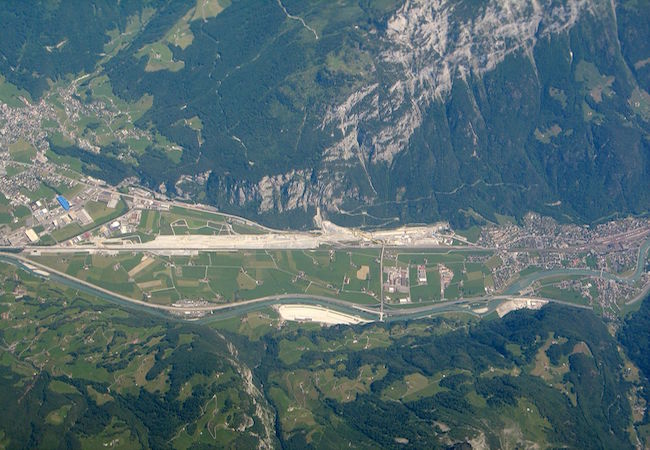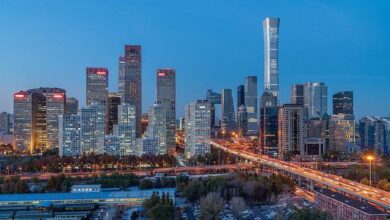
By Dr. Abdul Ruff
Humanity’s achievements in science and technology and innovative techniques have been on the rise since the industrial revolution, giving rise to new heights in innovative methodology. From airplanes, electricity, rail engines to remote technological innovations, computers and advanced mobiles, man has made tremendous strides in all walks of life, making life both easy and complicated at the same time.
From tunnels of a less than a kilometer first for the people to move on and then for the motor vehicles to pass through speedily, the stage has now set for a long tunnel rail journey covering a record 57 kilometers in Switzerland. Seventeen years after construction crews started boring beneath the Swiss Alps, the world’s longest, deepest tunnel officially opened on June 1. Fittingly for a project billed as Switzerland’s “construction of the century,” the Gotthard Base Tunnel was inaugurated amid colorful, sometimes surreal scenes, with visiting dignitaries treated to costumed dancers, fireworks and plenty of yodeling and alphorns.
The world’s longest and deepest rail tunnel has officially opened in Switzerland, after almost two decades of construction work. The 57km (35-mile) twin-bore Gotthard base tunnel will provide a high-speed rail link under the Swiss Alps between northern and southern Europe. Gotthard overtakes the 53.9-kilometer Seikan Tunnel in northern Japan as the longest rail tunnel in the world, relegating the 50.5-kilometer Channel Tunnel between Britain and France into third place. The tunnel, at 35.5 miles, is not only the longest in the world but also the deepest. It is easy to forget that thousands of workers spent 20 years on the project, drilling through the rugged terrain to excavate 28 million tons of rock and to construct the tunnel and tracks.
In a speech to guests in Erstfeld, near the northern entrance to the tunnel, Swiss Federal President Johann Schneider-Ammann said it was a “giant step for Switzerland but equally for our neighbours and the rest of the continent”. Afterwards two trains set off in opposite directions through the tunnel, each carrying hundreds of guests who had won tickets in a draw, and the new route was formally open. A lavish show then got under way for the assembled guests in Erstfeld, with dancers, acrobats, singers and musicians celebrating Alpine culture and history. European leaders, including German Chancellor Angela Merkel, French President Francois Hollande, Italy’s Prime Minister Matteo Renzi and Austrian Chancellor Christian Kern also attended the historic day’s events. European leaders including German Chancellor Angela Merkel, French President Francois Hollande and Italian Prime Minister Matteo Renzi joined Swiss President Johann Schneider-Ammann on the first official journey on the line. The presence of high-level guests at the opening shows that the new tunnel is about more than protecting the Alpine environment.
Hollande, who took part with others in a follow-up trip through the tunnel on a train, emerged on the southern side to give a speech in which he compared the Gotthard to the Channel Tunnel. Recalling the great Franco-British project, which was completed in 1994, he said: “Nobody could have imagined that one day you would be able to travel from England to France in that way.” The presence of high-level guests at the opening shows that the new tunnel is about more than protecting the Alpine environment. The French leader went on to praise European aspirations, including the free movement of people and goods.
A live relay carried a speech from the southern end of the tunnel, in Bodio, by the Swiss federal transport minister, Doris Leuthard. The train leaves the Swiss Alps’ station and soon enters total darkness. It picks up speed, reaching 125 mph as it hurtles through the mountain at depths of up to 7,500 feet. Temperatures in the tunnel exceed 100 degrees, but for those of us making Wednesday’s inaugural trip, the smooth ride is comfortably cool.
As it is known, Europe’s goods, whether Italian wine for the Netherlands or German cars for Greece, have to cross the Alps. Now they will able to do so more quickly, more safely, and more cheaply, our correspondent says. The project, which cost more than $12bn (£8.3bn) to build, was endorsed by Swiss voters in a referendum in 1992. Voters then backed a proposal from environmental groups to move all freight travelling through Switzerland from road to rail two years later.
The tunnel’s course is flat and straight instead of winding up through the mountains like the old rail tunnel and a road tunnel opened in 1980. About 260 freight trains and 65 passenger trains will pass through the tunnel each day in a journey taking as little as 17 minutes. The completed tunnel travels up to 2.3 km below the surface of the mountains above and through rock that reaches temperatures of 46C. Engineers had to dig and blast through 73 different kinds of rock, some as hard as granite and others as soft as sugar. More than 28m tonnes of rock was excavated, which was then broken down to help make the concrete used to build the tunnel. Reaching a depth of 2,300 meters (7,545 feet, almost 1.5 miles) the tunnel will slice an hour off the travel time between Zurich, Switzerland, and Milan, Italy. Trains will travel the tunnel, which runs between the towns of Erstfeld in the north and Bodio in the south, in only 20 minutes, reaching speeds of up to 250 kilometers an hour (155 mph), according to the Swiss Travel System.
The tunnel is being financed by value-added and fuel taxes, road charges on heavy vehicles and state loans that are due to be repaid within a decade. Swiss bank Credit Suisse has said its economic benefits will include the easier movement of goods and increased tourism. Nine workers died in accidents while the tunnel was under construction. Four were Germans, three Italians, and one each came from South Africa and Austria. They are commemorated by a plaque near the northern end of the tunnel, Swiss media report.

The new tunnel fits into the European railway freight corridor, which links Rotterdam and Genoa” — key ports in the Netherlands and Italy, Schneider-Ammann said, according to the Associated Press. “Aside from saving time, more merchandise can be carried through the Alps. These countries will benefit from the new tunnel by allowing the transfer of cargo from road to rail, reducing travel time and hauling costs. Another train carries 500 people who won tickets in a drawing to ride through the tunnel on opening day. It is a reminder that Swiss taxpayers footed the $10 billion tab for this project.
As the train speeds through the tunnel, it is reassuring to know the safety features were tested hundreds of times before this maiden trip. In case of an emergency, two stations along the route allow trains to cross from one tunnel to the other, if needed. And in case of fire, ventilation equipment will suck out smoke and blast in fresh air through side openings.
The trip lasts only 20 minutes — far shorter than driving along the winding roads through the mountains. The quicker transit time between central and southern Switzerland also brings two linguistic regions closer. The tunnel runs between the German-speaking Swiss town of Erstfeld in the north and the Italian-speaking town of Bodio in the south. When the train pulls into the Bodio station, passengers applaud. “It is a historic day for Switzerland and a milestone in railway history,” an emotional Swiss Transport Minister Doris Leuthard said at the opening ceremony.
About 1,500 guests celebrated the opening at both ends of the tunnel. A show depicted the history of Gotthard Mountain and the Alps, an alpine horn orchestra played at the foot of the mountain, and the Swiss Air Force flew in formation over the mountain. A public ceremony, likely to draw more than 100,000 people, will be held Saturday and Sunday.
Switzerland’s Gotthard Railway Tunnel is a major engineering achievement deep under snow-capped peaks. The Gotthard Base Tunnel is a record-setter, now eclipsing Japan’s Seikan Tunnel as the world’s longest. The 57-kilometer long tunnel creates a high-speed rail link deep beneath the famous mountain range, connecting northern and southern Europe. And with characteristic Swiss punctuality, this major engineering feat has been completed on schedule. Now the completed tunnel, delivered on time and within budget, will create a mainline rail connection between Rotterdam in the Netherlands and Genoa in Italy. When full services begin in December, the journey time for travelers between Zurich and Milan will be reduced by an hour to two hours and 40 minutes.
About 325 freight and passenger trains will pass through the Gotthard each day, connecting northern and southern Europe, and alleviating congestion and air pollution in the Alpine valleys. As France’s Hollande said, “Switzerland should be proud of what it has accomplished. It has created great infrastructure for all of Europe.”
Switzerland says it will revolutionize European freight transport. Goods currently carried on the route by a million lorries a year will go by train instead. The tunnel has overtaken Japan’s 53.9km Seikan rail tunnel as the longest in the world and pushed the 50.5km Channel Tunnel linking the UK and France into third place.
AlpTransit Gotthard, the company behind the construction of the tunnel, says the project will boost the efficiency and reliability of rail freight, making it more competitive.
Beyond the anticipated benefits for travel and trade, the project will provide a direct and economic route for freight transport.




